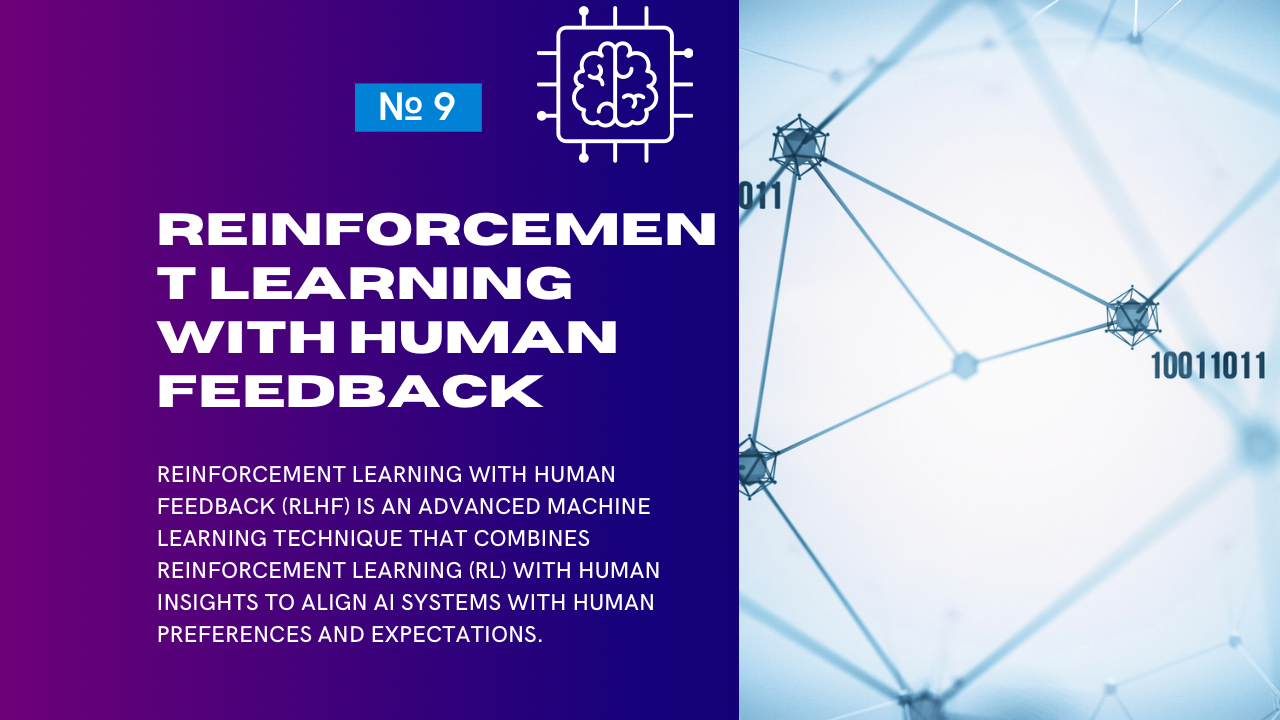Reinforcement Learning with Human Feedback (RLHF) is an advanced machine learning technique that combines reinforcement learning (RL) with human insights to align AI systems with human preferences and expectations. RLHF has gained significant attention for its ability to create more personalized, relevant, and user-friendly recommendation systems.
What is RLHF?
RLHF integrates human feedback into the RL process to guide and optimize the learning of AI systems. Instead of relying solely on predefined reward functions, RLHF incorporates human judgments to fine-tune model behavior.
Key steps in RLHF:
- Human Feedback Collection: Collecting data where humans rank or rate outputs generated by the system.
- Reward Model Training: Using human feedback to train a reward model that predicts how well an output aligns with user preferences.
- Policy Optimization: Using reinforcement learning (e.g., PPO – Proximal Policy Optimization) to improve the model based on the reward model.
Why Use RLHF in Recommendation Systems?
Traditional recommendation systems often rely on implicit feedback (e.g., clicks, likes) or explicit feedback (e.g., ratings). However, these signals can be noisy or misaligned with actual user satisfaction. RLHF introduces a layer of human oversight, enabling:
- Improved Relevance: Tailoring recommendations to align with user preferences more accurately.
- Bias Mitigation: Reducing biases that arise from historical data or algorithmic assumptions.
- Personalization: Adapting recommendations based on nuanced human preferences beyond numerical ratings.
Applications of RLHF in Recommendation Systems
| Use Case | Description | Examples |
|---|---|---|
| Content Recommendations | Enhancing personalized content delivery based on nuanced human feedback. | Video platforms like YouTube improving “Recommended for You” sections. |
| E-Commerce | Refining product recommendations to match user preferences more closely. | Amazon using RLHF to better align product suggestions with customer intentions. |
| Music/Media Platforms | Fine-tuning music or podcast recommendations based on subjective human rankings of quality. | Spotify or Apple Music optimizing playlists for mood or listening habits. |
| Learning Platforms | Adapting learning paths based on student engagement and feedback. | Duolingo or Coursera tailoring lessons to user difficulty levels and preferences. |
| Social Media Feeds | Customizing content in user feeds to balance engagement with well-being. | Facebook or Instagram curating content that aligns with mental health goals or interests. |
How RLHF Enhances Recommendation Systems
- Dynamic Personalization:
- RLHF allows systems to adjust recommendations in real time based on changing user feedback.
- Example: A movie platform learns that a user prefers indie films over blockbusters, even if initial behavior suggested otherwise.
- Ethical Recommendations:
- By involving human oversight, RLHF can reduce the amplification of harmful or misleading content.
- Example: A news recommendation system prioritizes credible sources based on feedback.
- Incorporating Subjective Preferences:
- RLHF captures subtle, subjective preferences that are hard to model with traditional metrics.
- Example: In e-commerce, feedback like “I prefer sustainable products” influences recommendations.
- Improved Diversity:
- Human feedback can guide systems to recommend a more diverse set of options rather than focusing solely on previous patterns.
- Example: Music platforms introducing new genres based on user input.
Challenges of RLHF in Recommendation Systems
| Challenge | Description | Potential Solutions |
|---|---|---|
| Scalability | Collecting and processing human feedback for large-scale systems is resource-intensive. | Use selective feedback or crowdsourcing to scale human input. |
| Bias in Feedback | Human feedback may introduce biases that skew recommendations. | Train reward models on diverse and representative datasets. |
| Reward Model Reliability | Reward models may misinterpret ambiguous or inconsistent feedback. | Implement robust validation techniques to evaluate reward models. |
| Cold Start Problem | New users or items may lack sufficient feedback for training models effectively. | Use hybrid methods combining RLHF with collaborative filtering. |
| Cost of Human Oversight | High-quality feedback can be expensive and time-consuming to collect. | Focus on active learning to prioritize critical areas for feedback. |
Comparison: RLHF vs Traditional Recommendation Approaches
| Aspect | Traditional Recommendation Systems | RLHF-Based Recommendation Systems |
|---|---|---|
| Feedback Source | Implicit (clicks, likes) or explicit (ratings). | Explicit human judgments and preference rankings. |
| Adaptability | Limited adaptability to nuanced preferences. | Dynamically adapts based on real-time human feedback. |
| Bias Handling | Historical data biases can propagate. | Human oversight helps identify and mitigate biases. |
| Ethical Considerations | Limited ability to account for ethical goals. | Allows for alignment with ethical and societal norms via human input. |
| Scalability | Scalable with minimal human involvement. | Requires efficient strategies to collect and integrate human feedback. |
Technologies and Frameworks for RLHF
| Tool/Framework | Purpose | Examples |
|---|---|---|
| OpenAI’s RLHF Framework | Integrating human feedback into language and recommendation models. | Used in ChatGPT’s fine-tuning process. |
| DeepMind’s AlphaGo | Combining reinforcement learning and human input to improve decision-making. | Applied to game-playing and strategic decision-making tasks. |
| Hugging Face Transformers | Adapting transformer-based models with RLHF for personalized recommendations. | Language models fine-tuned with feedback for contextual understanding. |
| ReAgent by Meta | An open-source platform for reinforcement learning in personalized systems. | Designed for real-time recommendation systems. |
Future Directions for RLHF in Recommendation Systems
- Automating Feedback Collection:
- Leveraging AI to interpret implicit human feedback (e.g., sentiment analysis of comments).
- Hybrid Approaches:
- Combining RLHF with collaborative filtering and content-based methods for robust recommendations.
- Ethical Alignment:
- Using RLHF to ensure recommendations prioritize well-being, fairness, and societal impact.
- Cross-Domain Recommendations:
- Expanding RLHF models to recommend across multiple domains (e.g., music, books, movies).
Conclusion
Reinforcement Learning with Human Feedback is transforming recommendation systems by incorporating human insights to optimize relevance, personalization, and ethical considerations. While RLHF introduces challenges like scalability and cost, its ability to align systems with nuanced human preferences makes it a promising direction for the future of AI-powered recommendations.
